|
|
Prepared
presentations***
Talks Focusing on
Particular Artists
|

|
Titans
of the Italian Renaissance
(single talk or 3-part series)
The
High Renaissance was a brief - 30 year - tranquil period at the end of
the 15th and start of the 16th centuries when the technical mastery to
produce illusionistic art and the desire to make classically-inspired
art came together in the hands of profound thinkers.
We'll look at a rich variety of images by Leonardo da
Vinci, Michelangelo, and Raphael while exploring their personal stories
and the times in which they lived as well as their contributions to
art.
Celebrities, courted by princes and popes, these men produced
some of the most influential works of western art.
|
|
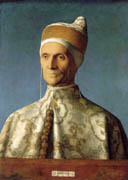
|
Sensuous Poetry: The Art of 16th
Century Venice
Bellini, Giorgione,
Tiziano – even their names are poetic.
Their art was no less so. Venetian
artists revel in the sensuality of color and the glory of the
female form. Compared to the
Venetians, contemporary Renaissance Italians painted only prose.
|
|

|
Stars
of the Seventeenth Century
Rembrandt, Caravaggio, Bernini
(single talk or 3-part series)
This
series looks in depth at the life and work of three great European
artists, the Italian painter Caravaggio, the Dutch master painter and printmaker Rembrandt van Rijn
andthe Italian sculptor-architect Gianlorenzo Bernini.
All three were immensely skillful and innovative artists whose lives,
like their artworks, were full of drama and emotion.
|
|
Manet
to Picasso
This
richly illustrated talk presents artists of the late 19th and
early 20th centuries who changed the course of western
art.
|

|
|
Claude Monet: Paintings and Plantings
Impressionist painter Claude Monet was an avid gardener painting
with flowers from wild poppies to hybrid gladioli and Japanese
waterlilies. He called his garden his most beautiful work of art. We’ll
talk about his garden ideas as we look at paintings he did of gardens he
had a hand in designing and those of Giverny, the one he called his
greatest masterpiece, along with photographs of how Giverny looks now.
|
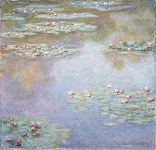 |
|


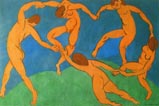
|
The
3 Ms who Changed
French Art:
Manet, Monet and Matisse
(single talks or 3-part series)
This
course offers an in-depth look at three great French artists.
Despite harsh criticism by their contemporaries, their rebellions
against the strictures of academic painting succeeded in changing
the course of Western art.
Session
1: Edouard
Manet who sought to update the Old Masters with contemporary
realism, never understanding why his revolutionary works were so
shocking to his contemporaries.
Session
2: Claude Monet who tried to capture the transitory nature of
vision, becoming the father of Impressionism.
Session
3: Henri Matisse who wanted to create a world of harmony and
color, an art of balance, purity, and serenity. His
experiments with color pushed the boundaries of art so far that
even his patron called one of his paintings "the nastiest
smear of paint I have ever seen."
|
|

|
American
Impressionism
American artists studying academic art in
Paris in the late 19th century were exposed to Impressionism. At
first most excoriated it as their teachers did - "It was
worse than a chamber of horrors" wrote J. Alden Weir after
visiting the 3rd Impressionist show.
Mary Cassatt was the only American to exhibit with the French
Impressionists. By the late 1880s other Americans were
experimenting with the style and bringing it back to America.
The Ten American Painters made it the most loved style in
America in the first decades of the 20th century. Find out
why it was so pleasing.
|
|
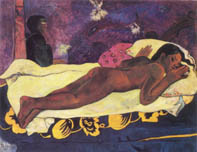
|
Paul
Gauguin: Dreaming amid Nature
Art
is abstraction when you dream amid nature
We
can tell many stories about the Post-Impressionist artist Paul Gauguin:
*
How
he turned from banker to impoverished artist.
*
How
he escaped from the "artificial and conventional" Paris to seek the primitive.
*
How
he fought with Vincent van Gogh over what art should be.
*
How
he went from husband and father of five to seek love on
tropical islands.
We'll
touch on all these but focus on Gauguin's emergence from a
mediocre impressionist to a strong original artist who left a
legacy that influenced 20th century artists.
|
|
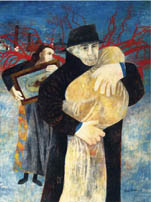
|
Ben
Shahn: Artist and Activist
Ben
Shahn was a socially aware artist famous for mixing politics with his
paint. This presentation looks at a variety of his work in a range
of media including photographs taken during the Depression, paintings in
the DIA, frescos he painted or proposed for public buildings and images
for books or magazines like the Saga of the Lucky Dragon. Along
the way we'll explore how his art reflects the ideals forged from his
experiences as a young child in Russia, as an immigrant on Manhattan's
Lower East Side, and traveling round the US south during the Great
Depression.
|
|
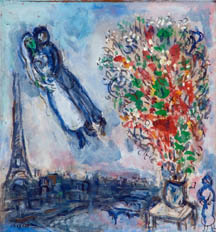
|
Marc
Chagall: Fairy Tales, Passion, and Wonder
Pablo
Picasso said Marc Chagall must have an angel in his head.
Chagall traveled far from the log cabin of his youth in Russia
to make a name for himself in Paris, the art center of the
world. He carried his early experiences with him. They helped
shape his art. This
illustrated presentation explores Chagall's early life, the peak
of his career, and his later life and work in many different
media.
(The
Chagall talks can be adapted as a two part series)
|
|
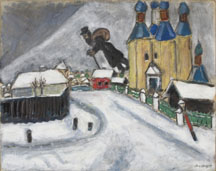
|
Marc
Chagall and the Jewish School of Paris
Early
in the 1900s several Jewish artists, mostly from Central and
Eastern Europe, lived and worked in the Montparnasse district of
Paris. They came to be known as the Jewish School of Paris. This
presentation looks at art by Marc Chagall and by other key
figures in the group, among them Sonia Delaunay, Amedeo
Modigliani, Fernand Léger and Chaim Soutine.
(The
Chagall talks can be adapted as a two part series)
|
|
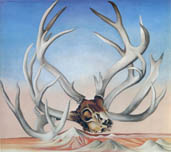
|
Georgia
O'Keeffe
O'Keeffe
was one of the first artists to experiment with abstraction in
America. Her large paintings of flowers were designed to make even
busy New Yorkers want to stop and examine them. We'll follow her
long career from her early drawings to the paintings of her beloved New
Mexico. Her obituary in the New York Times declared "Her
colors dazzled, her erotic implications provoked and stimulated, her
subjects astonished and amused."
|
|
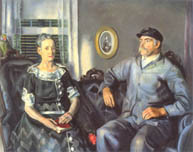
|
Painters of Urban
Life: The Ashcan School
In
the early 20th century the cities of America were expanding rapidly with
immigrants from rural areas and overseas creating a lively mix of rich
and poor, parks and tenements. Artists flocked to New York to
teach and to study. This talk focuses on those artists, such as John
Sloan, George Bellows, and Maurice Prendergast who depicted scenes of
life in city streets, parks, and bars.
|
|
Diego
Rivera and his Murals
(single talk or 2-part series)
The
greatest of the Mexican muralists called the fresco cycle he painted in
the Detroit Institute of Arts his "finest work."
We'll look in depth at the
Detroit Industry murals but also at other work by Diego Rivera as we explore his style, his life, and his ideas
using detailed illustrations.
|

|
|
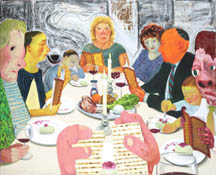
|
Above
Rubies:
Jewish Women Artists
This
talk will range from artists like Rachel Olivetti who embroidered a Torah Ark curtain in
1620 to women like Eva Hesse and Helen Frankenthalerwho helped push the
boundaries of art in the later 20th century. Many talented women artists,
like Judy Chicago, were moved more by feminism than Judaism, but that should not prevent
celebration of their unique achievements. Others
like Elaine de Kooning and Lee Krasner worked in the shadow of more
famous husbands but deserve to be better known. (Frida Kahlo gets
her own talk.)
|
|
 |
L'Chaim!
An Introduction to Jewish Artists
This
richly illustrated talk will cover works by a variety of Jewish artists.
The title includes the Jewish toast "To Life!" as, although
some of the artists we will be celebrating had lives that ended
tragically, they live on in their works.
We'll
discuss many artists who are internationally famous, like Marc Chagall,
Frank Gehry, Mark Rothko and Maurice Sendak but will also explore less
well-known artists whose work is well worth discovering. The women get
their own talk.
|
|
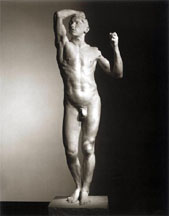
|
Triumph and
Tragedy:
The Art and
Relationship of Auguste Rodin
and Camille Claudel
Claudel was a young
sculptor when she met the great master Rodin.
He recognized her ability. She
became his muse and his mistress and they sculpted
together for the next 10 years. This talk will
examine her influence on Rodin and his on her by
looking at works inspired by the passion of their relationship.
|
|

|
Annie
Leibovitz: Capturing Celebrity
Photographer
Annie Leibovitz has produced some of the most iconic and
memorable images of the last 40 years. We'll explore a rich variety of images from
the career of this celebrated artist including her most famous
covers for Rolling Stone and several photos from her book
Women.
|
|

|
Revisit
Rembrandt
In this tribute, we'll
explore the rich art world of 17th century Holland from which Rembrandt emerged, and look not only at his uniquely
sensitive paintings but also at revolutionary prints and drawings created by this master draftsman.
Along the way we'll tell the story of Rembrandt's life, his eclipse and the rediscovery of
this very human artist.
|
|

|
Sensuous Poetry: The Art of 16th
Century Venice
Bellini, Giorgione,
Tiziano – even their names are poetic.
Their art was no less so. Venetian
artists revel in the sensuality of color and the glory of the
female form. Compared to the
Venetians, contemporary Renaissance Italians painted only prose.
|
|
Manet
to Picasso
This
richly illustrated talk presents artists of the late 19th and
early 20th centuries who changed the course of western
art.
|

|
|
Artist
Couples: Life, Art, and
Passion
(separate talks or 3-part series)
We'll
explore the intense passions and stormy relationships of these couples
while looking at and discussing the
magnificent art they created.
There are also individual talks
available on each of these artists separately.
Camille Claudel
and Auguste
Rodin
Camille
Claudel was a 19-year-old sculptor when she met the great master
Rodin. He was captivated by her talent and strong will to become
recognized as an artist. Claudel became Rodin's muse and his
mistress. They sculpted together for the next 10
years. The richly illustrated lecture examines how each
artist's work was influenced by the passion of their relationship.
Georgia O'Keeffe
and Alfred Stieglitz
Georgia
O'Keeffe was a young art student when she met the already
internationally-famous photographer Alfred Stieglitz. Their love affair
and later marriage led to a major series of photos of her by Stieglitz
which in turn impacted how her art was viewed. His darkroom techniques
influenced her art.
Frida Kahlo
and Diego
Rivera
Theirs is a story of strong passions and incredible art.
This
presentation explores their stormy relationship while looking at the art they created throughout their
careers. Diego Rivera was famous for large public political
murals. Frida Kahlo is celebrated for small intimate personal works. But
we'll find common characteristics in their art.
|
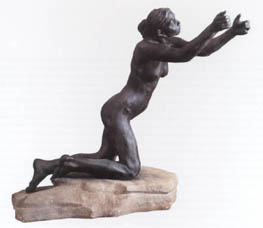 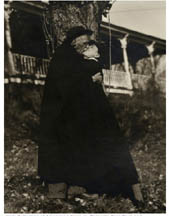 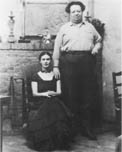
|
General Topics
Art
Topics by Time Period
Talks
Focusing on Special Artists
***
Contact wendyevans@art-talks.org
to get a new topic developed for your group.
top
of page
|